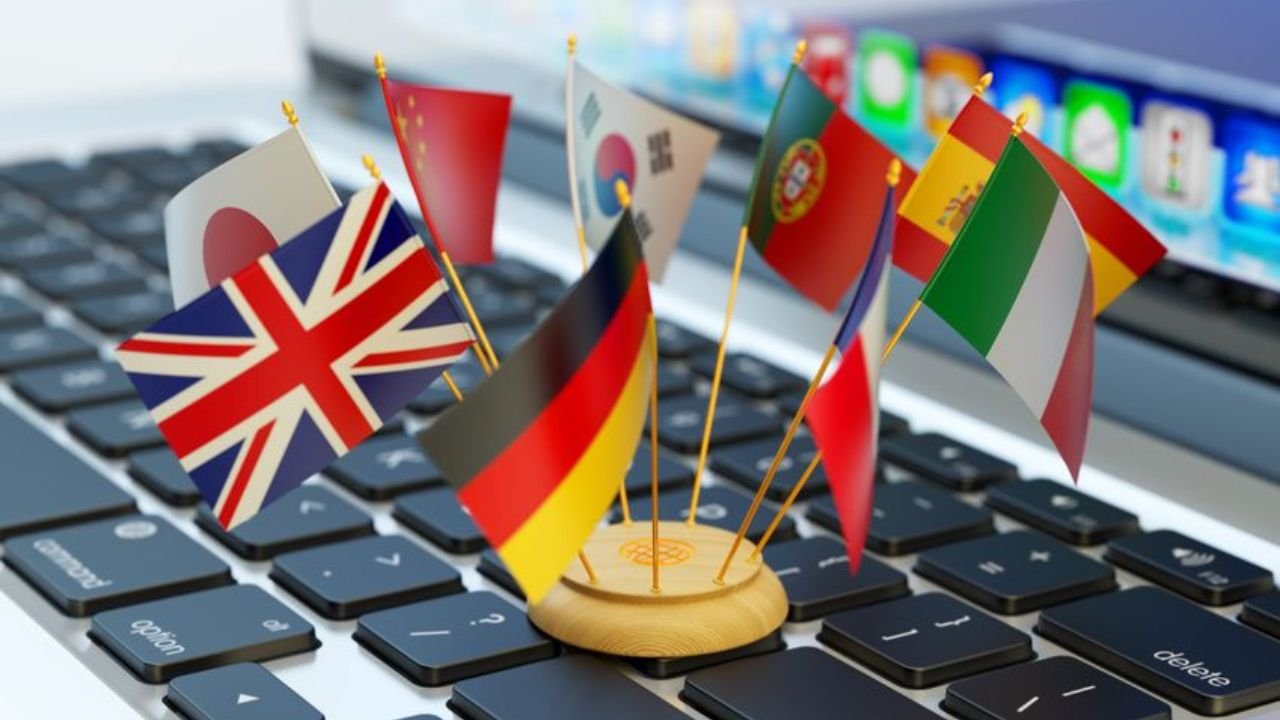In the tapestry of global communication, translation forms the threads that bind diverse cultures and languages together. One such intricate thread is the concept of “käntäj,” a term that embodies the art and science of Finnish translation. This blog post invites you on a fascinating exploration of käntäj, uncovering its unique role, historical significance, and future potential within the realm of international communication.
Definition and Origin of Käntäj
The word “käntäj” refers to a translator—specifically one well-versed in the Finnish language. Finland, with its rich linguistic heritage and unique language, demands a specialized approach to translation. Originating from the Finnish word “kääntää,” meaning “to translate,” käntäj signifies more than a mere language converter; it represents a cultural bridge that connects Finnish speakers with the rest of the world.
Finnish is a member of the Uralic language family, distinct from the Indo-European languages spoken by most Europeans. Its structure, vocabulary, and idiomatic expressions are unique, making translation both an art and a challenge. Käntäj has evolved over the years, adapting to modern needs while preserving the essence of Finnish culture and communication.
Importance of Finnish Translation in International Communication
Language is a doorway to understanding and collaboration among nations. Finnish translation plays a critical role in international communication by enabling cultural exchange and fostering global partnerships. In today’s interconnected world, Finnish companies are expanding their influence beyond borders, requiring effective communication with international stakeholders.
Translation ensures that Finnish literature, scientific research, technological advancements, and cultural expressions reach global audiences. It also facilitates diplomacy, trade, tourism, and academia by bridging linguistic gaps. Käntäj professionals are instrumental in this process, ensuring that the nuances of the Finnish language are accurately conveyed and understood.
Understanding Käntäj
What Makes Käntäj Unique in the Translation World
Käntäj stands out in the translation landscape due to its focus on preserving the authenticity of Finnish language and culture. Unlike general translation practices, käntäj involves a deep understanding of the cultural and linguistic intricacies specific to Finland.
- Cultural Sensitivity: Käntäj professionals are culturally sensitive, ensuring that translations resonate with Finnish audiences while respecting their values and traditions.
- Idiomatic Expertise: Finnish is rich in idiomatic expressions, and käntäj involves mastering these phrases to maintain the intended meaning and emotion in translations.
- Artistic Interpretation: Translating Finnish literature and poetry requires artistic interpretation to capture the beauty and symbolism inherent in the original text.
The Role of Käntäj in Preserving Finnish Culture and Language
Käntäj plays a vital role in preserving Finnish culture by translating works that reflect the nation’s identity. From Kalevala, the national epic, to modern novels and films, käntäj ensures that these pieces of cultural heritage are accessible to the world.
- Historical Documentation: Finnish historical texts and documents are translated to provide insights into the country’s past, contributing to global historical knowledge.
- Cultural Exchange: Through translation, Finnish art, music, and folklore are shared with the world, promoting cultural exchange and appreciation.
Becoming a Käntäj
Steps to Enter the Finnish Translation Industry
Aspiring käntäj professionals can take several steps to enter the Finnish translation industry and develop their skills:
- Education and Training: Pursuing a degree in translation studies, linguistics, or Finnish language provides a solid foundation. Specialized courses in Finnish translation techniques further enhance expertise.
- Language Proficiency: Mastery of both Finnish and target languages is essential. Immersion experiences, language courses, and practice with native speakers can improve proficiency.
- Cultural Literacy: Understanding Finnish culture, traditions, and societal norms is crucial for effective translation. Engaging with Finnish literature, films, and media can deepen cultural literacy.
Challenges and Opportunities for Aspiring Käntäj
The path to becoming a käntäj is both rewarding and challenging. Here are some challenges and opportunities faced by aspiring professionals:
- Linguistic Complexity: Finnish’s complex grammar and vocabulary require dedication and continuous learning. However, mastering these complexities leads to greater linguistic flexibility.
- Cultural Adaptation: Translating cultural nuances can be challenging, but it offers the opportunity to become a cultural ambassador, promoting understanding between different societies.
- Technological Integration: The digital era presents opportunities to leverage technology in translation work. Familiarity with translation software and tools can enhance efficiency and accuracy.
The Art and Science of Käntäj
Techniques and Best Practices in Finnish Translation
Käntäj professionals employ various techniques and best practices to ensure accurate and meaningful translations:
- Contextual Understanding: Translators consider the context of the source text, including its purpose, audience, and tone, to deliver appropriate translations.
- Collaboration: Collaborating with subject matter experts and native speakers ensures accuracy and authenticity in specialized fields, such as legal or medical translation.
- Proofreading and Editing: Rigorous proofreading and editing processes are essential for maintaining high-quality translations and minimizing errors.
The Impact of Technology on Käntäj Work
Technology has revolutionized the field of translation, offering new tools and resources for käntäj professionals:
- Computer-Assisted Translation (CAT) Tools: CAT tools enhance productivity by providing translation memory, terminology management, and consistency checks.
- Machine Translation: While machine translation aids in handling large volumes of content, human involvement remains crucial for quality assurance and cultural adaptation.
- Localization Software: Localization involves adapting content for specific regions, and software solutions streamline this process for käntäj professionals.
Notable Käntäj Works
Analysis of Famous Translated Works from Finnish to English or Vice Versa
Several notable works have been translated from Finnish to English or vice versa, showcasing the skill and creativity of käntäj professionals:
- “Kalevala” Translations: The national epic, Kalevala, has been translated into multiple languages, preserving its mythical tales for a global audience. Each translation brings unique interpretations while capturing the essence of Finnish folklore.
- “The Unknown Soldier” by Väinö Linna: This classic Finnish novel has been translated into English, allowing readers worldwide to experience its powerful portrayal of war and humanity.
- Finnish Poetry Collections: Finnish poetry, known for its lyrical beauty, has been translated to share the emotions and imagery of renowned poets like Eino Leino and Edith Södergran.
Käntäj in the Digital Age
Käntäj in Online Platforms and Social Media
The digital age has expanded the reach of käntäj professionals, enabling them to connect with audiences through online platforms and social media:
- Blogging and Content Creation: Käntäj experts share their insights, experiences, and translation tips through blogs and articles, reaching a global audience of language enthusiasts and learners.
- Social Media Engagement: Social media provides a platform for käntäj professionals to engage with the public, answer queries, and promote cultural exchange through interactive content.
- Online Learning Resources: Käntäj professionals contribute to online language courses and resources, facilitating language learning for diverse audiences.
The Future of Käntäj Trends and Predictions
The future of käntäj holds exciting possibilities and trends that will shape the translation landscape:
- Artificial Intelligence Integration: AI-driven translation tools will continue to evolve, enhancing accuracy and efficiency while reducing routine tasks for käntäj professionals.
- Cultural Diversity in Translation: The demand for translating content from diverse cultures will grow, prompting käntäj professionals to explore new languages and cultural contexts.
- Virtual Collaboration: Remote work and virtual collaboration will become more prevalent, enabling käntäj professionals to work with international teams and clients seamlessly.
You May Also Like: Why Teltlk Stands Out in Modern Communication
Conclusion
In conclusion, käntäj is more than a translation practice; it is an art form that bridges language and culture, connecting people across the globe. For language enthusiasts, translation professionals, and Finnish culture enthusiasts, understanding and appreciating the intricacies of käntäj opens doors to new perspectives and opportunities.
Whether you’re a seasoned translator or an aspiring language lover, exploring the world of käntäj promises a rewarding and enriching experience. As technology continues to shape the translation landscape, the role of käntäj professionals will remain essential in preserving languages, sharing cultures, and fostering global connections.
If you’re eager to learn more about käntäj or enhance your translation skills, engage with the vibrant community of language enthusiasts and translation professionals. Together, we can celebrate the beauty and significance of language, culture, and käntäj.
FAQs
What does “käntäj” mean?
Käntäj is the Finnish term for a translator, signifying a language expert who specializes in translating Finnish content into other languages or vice versa.
How does käntäj preserve Finnish culture?
Käntäj professionals preserve Finnish culture by accurately translating literary works, historical documents, and cultural content, ensuring that the essence of Finnish identity is maintained.
What skills are needed to become a käntäj?
Aspiring käntäj professionals need language proficiency, cultural literacy, and translation expertise. Continuous learning, cultural sensitivity, and collaboration are essential skills.
How has technology impacted käntäj work?
Technology, such as CAT tools and machine translation, enhances käntäj work by improving productivity and accuracy. However, human involvement is crucial for cultural adaptation and quality assurance.
What are some famous Finnish works translated by käntäj?
Notable translated works include Kalevala, The Unknown Soldier by Väinö Linna, and Finnish poetry collections by Eino Leino and Edith Södergran.











